Aging relentlessly
When I was just beginning to run as a teenager, I remember how surprised I was this table in the gym:
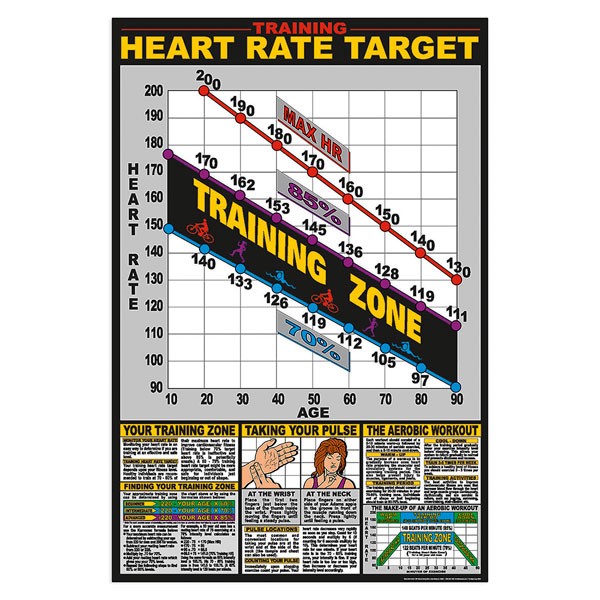
I could not understand why with age the maximum pulse to which our heart is capable of is so inexorably reduced. Does this even happen to constantly practicing athletes? Can not be! At least between 20 and 40 people, leading a healthy lifestyle and regularly involved in sports, can certainly keep their physical performance at the same level - a naive Chukchi young man thought.
And now more than 20 years have passed, and in my own skin I understand that - alas - no. You can worsen. Slow down no. That is why in professional sports there are practically no 35-year-old sprinters or 40-year-old football players, and the peak age of swimmers is generally 21 years old. Here is an excellent graph showing the age-lag and sprinters and stayers:
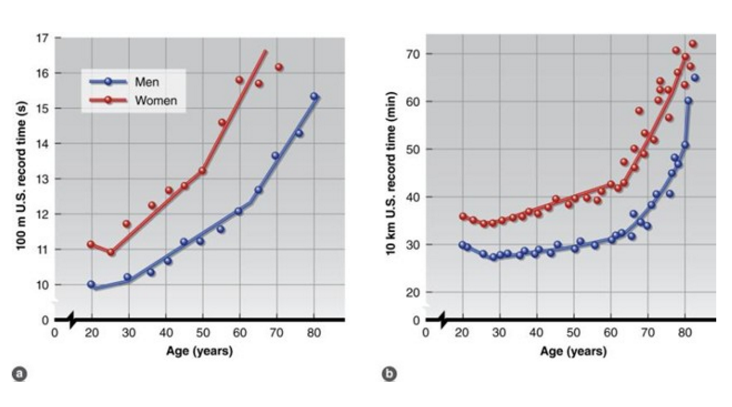
The guaranteed age-related decrease in cardiac function is only one of the reasons why athletes have such a short peak period. Respiratory function deteriorates in unison:
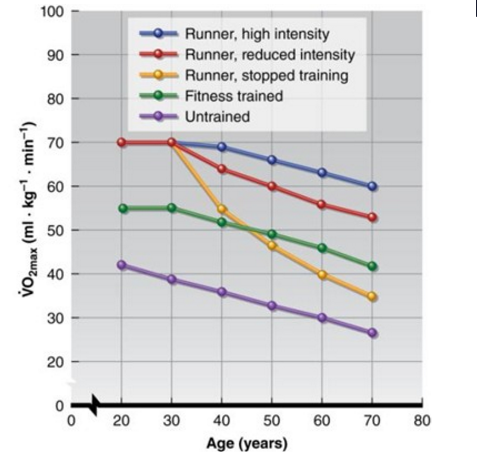
Almost immediately after puberty, different systems of our body begin to slowly but surely deteriorate. And even this sad schedule from Ben Best from my post about menopause and aging reflects only a part of the inevitable age degradation to which our body is doomed:

Here is another chart from Mike Darwin's excellent article with a couple of additional indicators; it shows how quickly kidney function deteriorates with age ( even “ageless” naked diggers are susceptible to age-related nephritis):
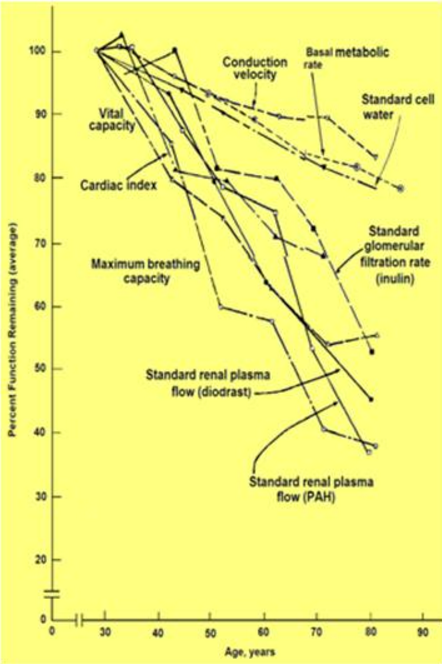
For me personally, the most unpleasant degradation is cognitive. Some aspects of it begin at the age of 27 , and memory begins to deteriorate by the age of 40. In this case, the brain atrophies even physically - between 22 and 82 years old, we lose more than a third of its mass:

Moreover, a significant part of this loss comes from the gray matter:

And all this adds the risk of dementia, which, after 60 years, begins to double every 5 years.
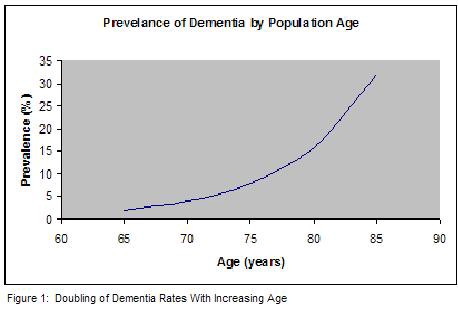
The immune system begins to atrophy even earlier than the cognitive one. The involution of the thymus (that is, atrophy of the thymus gland) begins even during puberty, and between 25 and 60 years of age, its functional parameters deteriorate 20 times . Therefore, the simple flu, which children suffer for a week without any special consequences, can be fatal for an elderly person. Here is a chart of age-related changes in the thymus:

Also, with age, we are guaranteed weaker. Both strength and muscle mass begin to decline by 1-2% per year after 40 years. Fast muscle fibers with age begin to be replaced with slow ones.

Do not avoid age-related degradation of muscle strength and professional athletes:
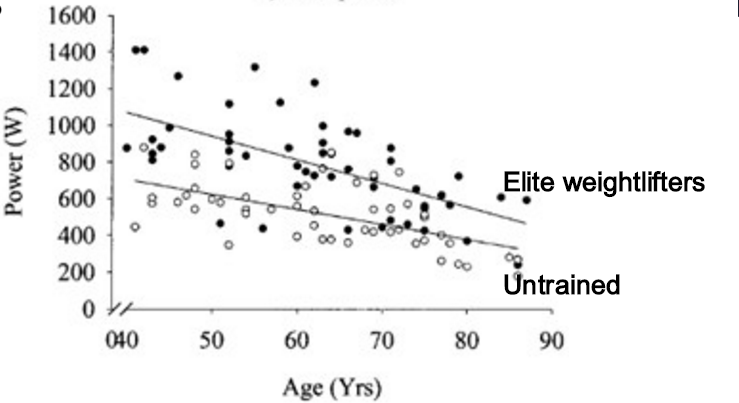
Although the benefits of physical training persist for many years:
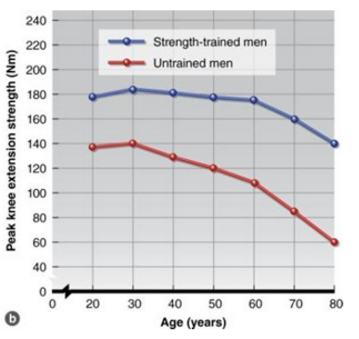
Our bones also atrophy after 35:
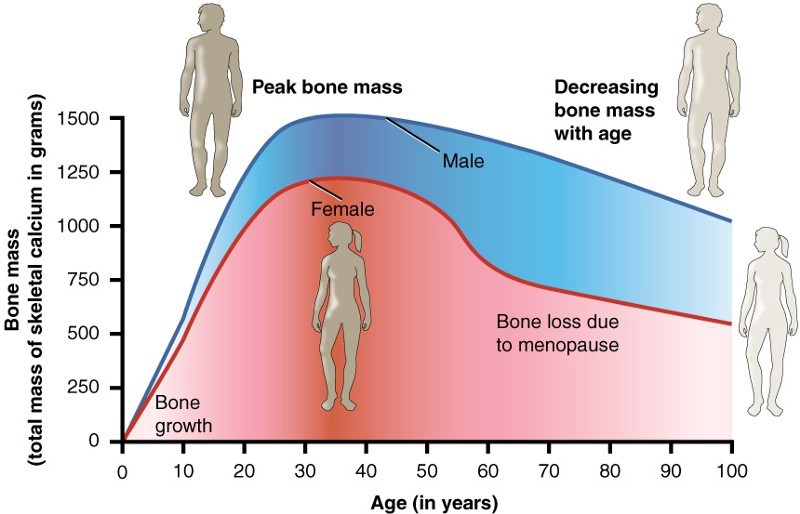
Vision begins to deteriorate much later, but after 70 years many people experience problems with it:

The hearing is getting worse - his loss begins earlier and many more people are exposed to it:
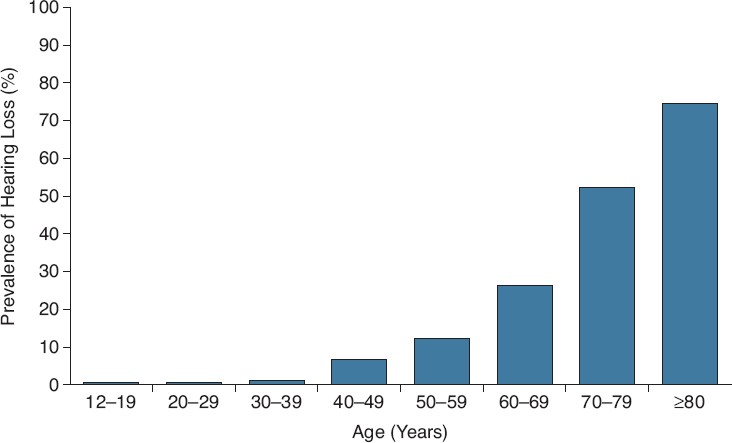
Taste and smell also deteriorate with age:
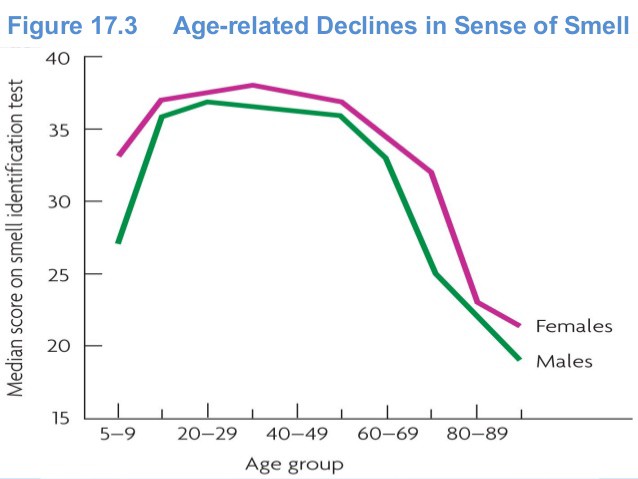
Although who needs them when the teeth are less than half?
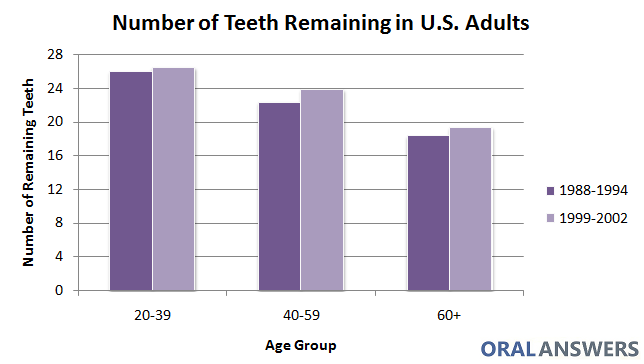
In general, aging is a real scourge. And then HIV is the “Age-related human involution”, which is probably programmed in our DNA and threatens us all. And this genetic pathology must be treated, because it is she who is the greatest source of pain and suffering in our universe.


I could not understand why with age the maximum pulse to which our heart is capable of is so inexorably reduced. Does this even happen to constantly practicing athletes? Can not be! At least between 20 and 40 people, leading a healthy lifestyle and regularly involved in sports, can certainly keep their physical performance at the same level - a naive Chukchi young man thought.
And now more than 20 years have passed, and in my own skin I understand that - alas - no. You can worsen. Slow down no. That is why in professional sports there are practically no 35-year-old sprinters or 40-year-old football players, and the peak age of swimmers is generally 21 years old. Here is an excellent graph showing the age-lag and sprinters and stayers:

The guaranteed age-related decrease in cardiac function is only one of the reasons why athletes have such a short peak period. Respiratory function deteriorates in unison:

Almost immediately after puberty, different systems of our body begin to slowly but surely deteriorate. And even this sad schedule from Ben Best from my post about menopause and aging reflects only a part of the inevitable age degradation to which our body is doomed:

Here is another chart from Mike Darwin's excellent article with a couple of additional indicators; it shows how quickly kidney function deteriorates with age ( even “ageless” naked diggers are susceptible to age-related nephritis):

For me personally, the most unpleasant degradation is cognitive. Some aspects of it begin at the age of 27 , and memory begins to deteriorate by the age of 40. In this case, the brain atrophies even physically - between 22 and 82 years old, we lose more than a third of its mass:

Moreover, a significant part of this loss comes from the gray matter:

And all this adds the risk of dementia, which, after 60 years, begins to double every 5 years.

The immune system begins to atrophy even earlier than the cognitive one. The involution of the thymus (that is, atrophy of the thymus gland) begins even during puberty, and between 25 and 60 years of age, its functional parameters deteriorate 20 times . Therefore, the simple flu, which children suffer for a week without any special consequences, can be fatal for an elderly person. Here is a chart of age-related changes in the thymus:

Also, with age, we are guaranteed weaker. Both strength and muscle mass begin to decline by 1-2% per year after 40 years. Fast muscle fibers with age begin to be replaced with slow ones.

Do not avoid age-related degradation of muscle strength and professional athletes:

Although the benefits of physical training persist for many years:

Our bones also atrophy after 35:

Vision begins to deteriorate much later, but after 70 years many people experience problems with it:

The hearing is getting worse - his loss begins earlier and many more people are exposed to it:

Taste and smell also deteriorate with age:

Although who needs them when the teeth are less than half?

In general, aging is a real scourge. And then HIV is the “Age-related human involution”, which is probably programmed in our DNA and threatens us all. And this genetic pathology must be treated, because it is she who is the greatest source of pain and suffering in our universe.

All Articles